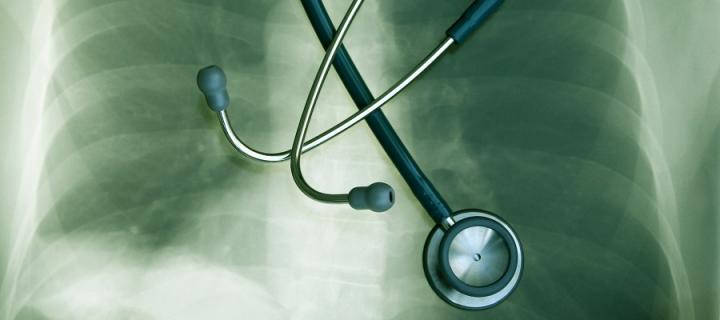COPD
The impact of a telemetric COPD monitoring service: a randomised controlled trial with nested qualitative study.
Background
Long-term conditions are a major healthcare challenge. As the population ages more people are living with long-term conditions rendering the current, clinician centred models of management unsustainable in the longer-tem.
NHS policy increasingly encourages people to self-manage their condition with additional professional support for those at greatest risk.
Technologies are now available which allow patients with chronic obstructive pulmonary disease (COPD) to monitor their own illnesses and automatically send the information by internet to a secure web site, which they and their clinicians can view. Such telemonitoring systems provide electronic reminders to patients to take measurements and medication, and alerts patients and clinicians if additional treatment may be needed.
Existing research evidence indicates that engaging patients in telemetric self-monitoring and management can improve clinical outcomes in asthma, but the evidence in COPD is mixed. There remains a pressing need to evaluate rigorously such interventions in a UK NHS setting.
NHS Lothian is investing in telemetric self-monitoring equipment for a range of conditions, including COPD, to develop a new, evidence-based model of care. The telemetric equipment being deployed provides information to patients and telemonitoring staff, facilitating rapid advice to patients. A patient recording a deteriorating symptom or parameter is immediately detected and contacted by telemonitoring staff allowing timely diagnosis and therapeutic intervention.

Aims
The aims of the trial were to see if telemetry systems deployed by NHS Lothian:
- help prevent hospital admissions
- improve COPD control and quality of life
- save patients and their clinicians’ time
Method
We undertook research using both qualitative and quantiative methods.
We conducted a randomised controlled trial (RCT) in which patients who have had a recent admission for COPD were randomised to one of two groups: one group who get the telemetry equipment (the intervention group) and the other group who continue to receive their usual care (the control group).
We collected data about admissions and administered questionnaires at the start and at the end of the study in all the patients to see if those in the telemetry groups are able to cope better with their illness, have had fewer admissions or spent less time in hospital.
We also conducted qualitative semi-structured interviews to explore patient and staff experiences of using the technology.
Research Questions
Randomised controlled trial:
In people with moderate to severe COPD, does tele-supported self-monitoring compared to usual care:
- reduce the time to re-admission, and the number and length of hospital admissions and exacerbations?
- improve disease-specific quality of life?
- reduce anxiety and depression?
- improve patient knowledge and self-efficacy?
- engage patients in self-care and improve compliance?
- represent a cost-effective use of NHS resources?
Qualitative study:
1. What are people’s with COPD experiences and opinions of this service including impact on behaviour, mood, positive and negative experiences and change in relationship with their healthcare provider?
2. What are healthcare providers’ experiences and opinions of this service?
Results
The results of our randomised controlled trial showed that telemonitoring for COPD did not reduce hospital admissions when compared with usual care. It increased workload in primary care and was not cost-effective. There was no evidence of impact on quality of life, anxiety, condition knowledge or self-efficacy.
However, our qualitative work showed that the intervention was very popular with patients who felt very well cared for and with those clinicians who used the system who felt that care and patient self-management had improved as a result.
We concluded that telemonitoring for COPD should not be implemented at scale in its current format and that further research is required to determine which physiological measures and which algorithms are likely to be helpful to detect exacerbations and to identify those people most likely to benefit.
Papers
Final trial results: Effectiveness of telemonitoring integrated into existing clinical services on hospital admission for exacerbation of chronic obstructive pulmonary disease: researcher blind, multicentre, randomised controlled trial (BMJ, 2013)
Exploring telemonitoring and self-management by patients with chronicobstructive pulmonary disease: A qualitative study embedded in a randomized controlled trial (Patient Education and Counseling, 2013)
Continuity, but at what cost? The impact of telemonitoring COPD on continuities of care: a qualitative study (Primary Care Respiratory Journal, 2012)
| Funder | Chief Scientist Office |
| Chief Investigator | Dr Hilary Pinnock |
Additional information
Pre-trial pilot work:
Reconfiguring Care for Chronic Disease with Home Monitoring: a pilot study report on telemetry-supported care for COPD in the Lothian Region (Telescot, 2009)
Protocol of the randomised controlled trial:


